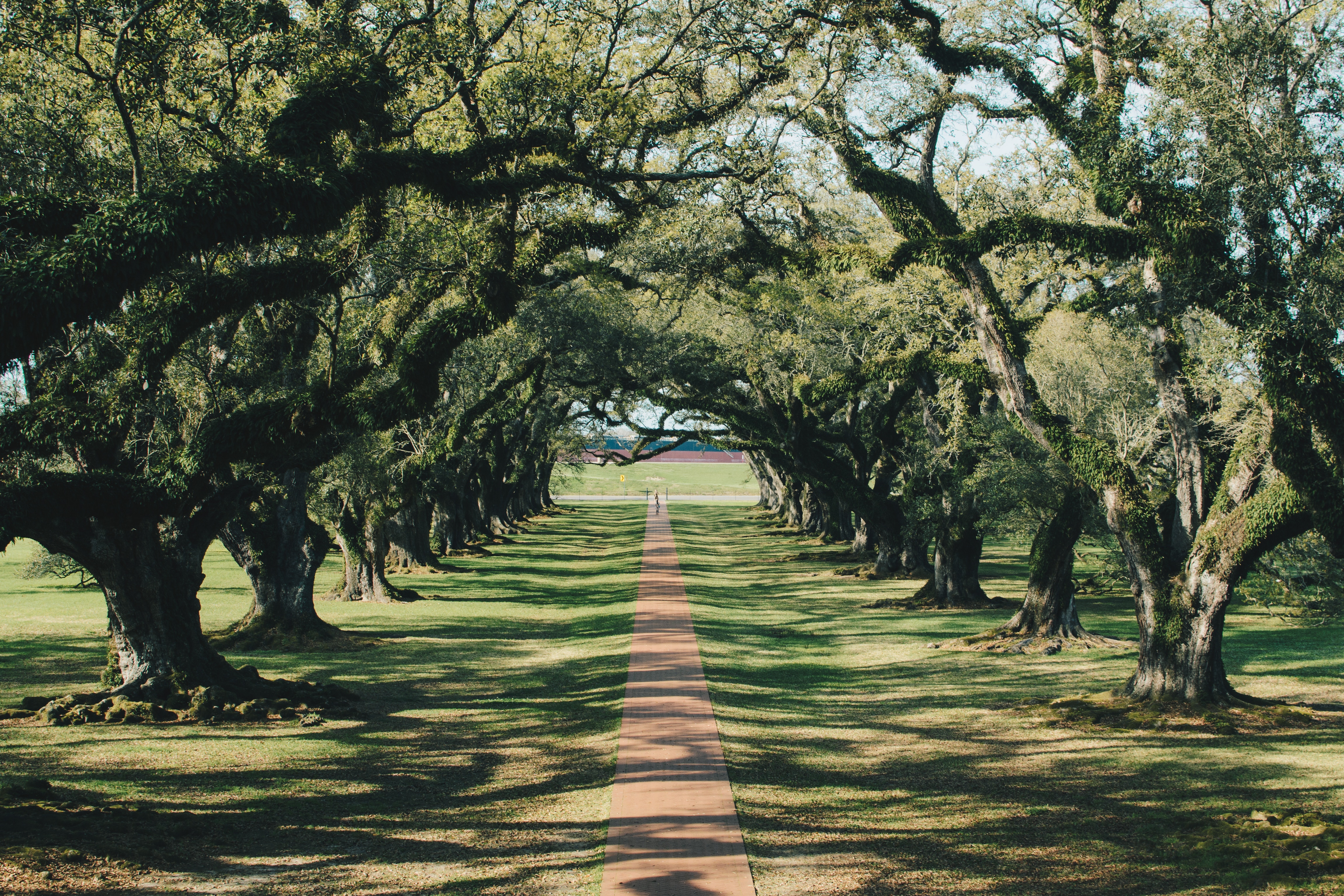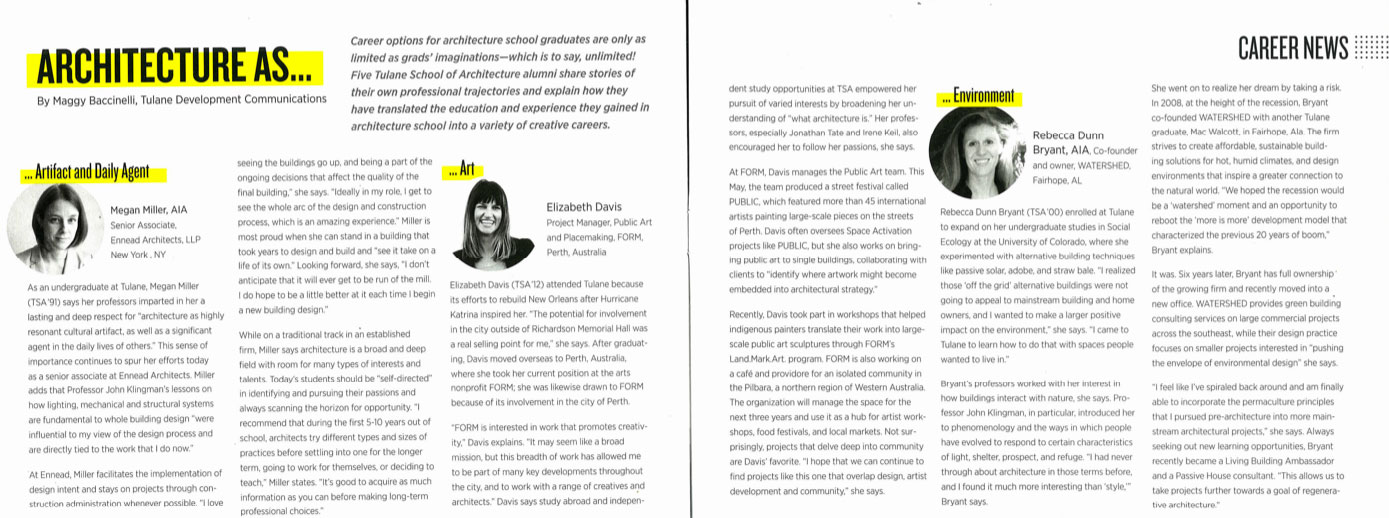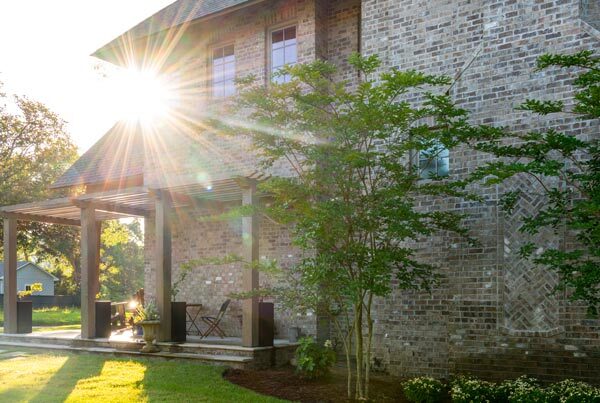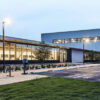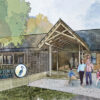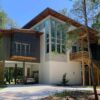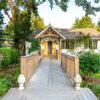Using environmental design and restorative architecture to appeal to mainstream building and home owners.

WATERSHED architect and Tulane alumni Rebecca Dunn Bryant reflects on how she integrates environmental design into sought after spaces.
Five Tulane School of Architecture Alumni explain how they have translated the education and experience they gained in architecture school into a variety of creative careers.
-By Maggy Baccinelli, Tulane Development Communications
Rebecca Dunn Bryant (TSA ‘00) enrolled at Tulane to expand on her undergraduate studies in Social Ecology at the University of Colorado, where she experimented with alternative building techniques like passive solar, adobe, and straw bale. “I realized those ‘off the grid‘ alternative buildings were not going to appeal to mainstream building and home owners, and I wanted to make a larger positive impact on the environment,” she says. “I came to Tulane to learn how to do that with spaces people wanted to live in.”
Bryant’ s professors worked with her interest in how buildings interact with nature, she says. Professor John Klingman, in particular, introduced her to phenomenology and the ways in which people have evolved to respond to certain characteristics of light, shelter, prospect, and refuge. “I had never thought about architecture in those terms before, and I found it much more interesting than ‘style’,” Bryant says.
She went on to realize her dream by taking a risk. In 2008, at the height of the recession, Bryant co–founded WATERSHED with another Tulane graduate, Mac Walcott, in Fairhope, Ala. The firm strives to create affordable, sustainable building solutions for hot, humid climates, and design environments that inspire a greater connection to the natural world. “We hoped the recession would be a ‘watershed‘ moment and an opportunity to reboot the ‘more is more’ development model that characterized the previous 20 years of boom,” Bryant explains.
It was. Six years later, Bryant has full ownership of the growing firm and recently moved into a new office. WATERSHED provides green building consulting services on large commercial projects across the southeast, while their design practice focuses on smaller projects interested in “pushing the envelope of environmental design” she says.
“I feel like I’ve spiraled back around and am finally able to incorporate the permaculture principles that I pursued pre-architecture into more mainstream architectural projects.”
Always seeking out new learning opportunities, Bryant recently became a Living Building Ambassador and a Passive House consultant. “This allows us to take projects further towards a goal of regenerative architecture.”

